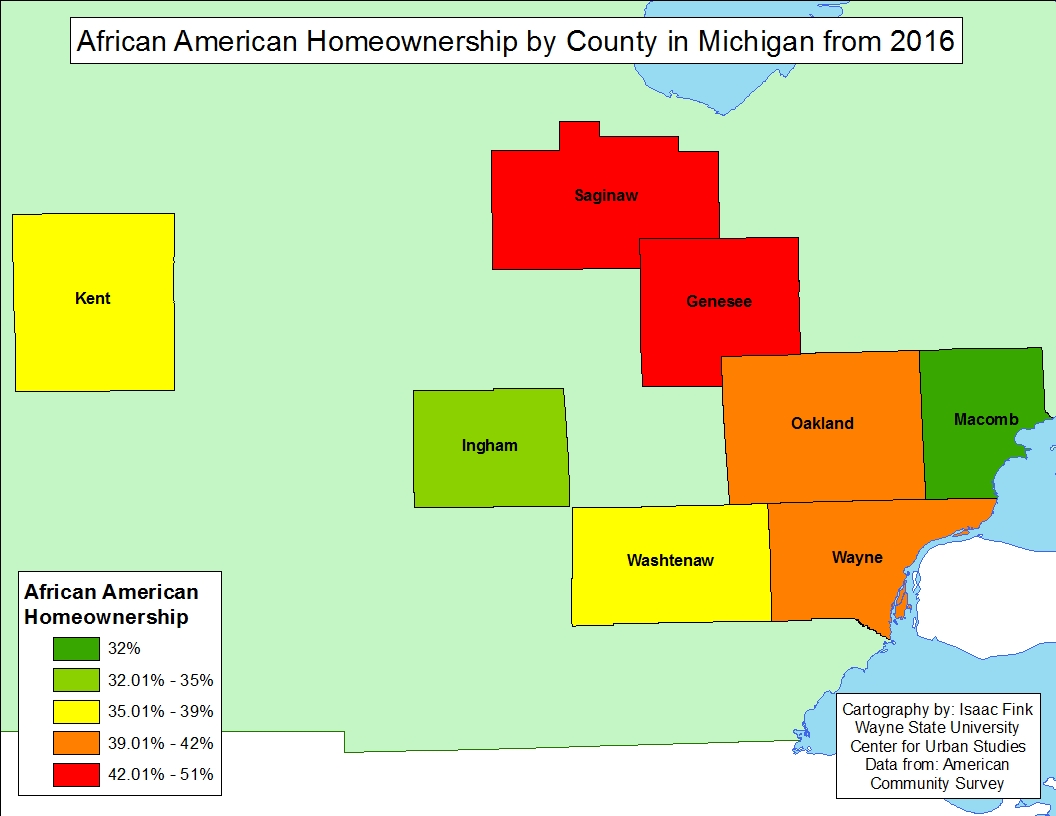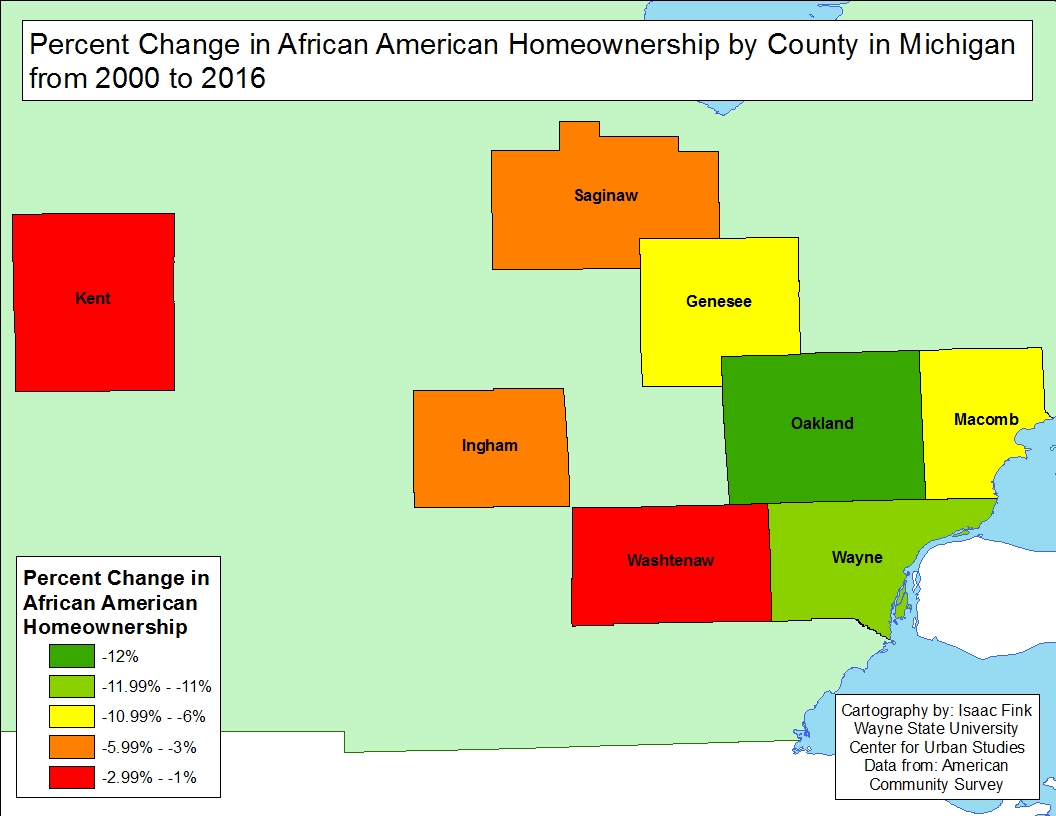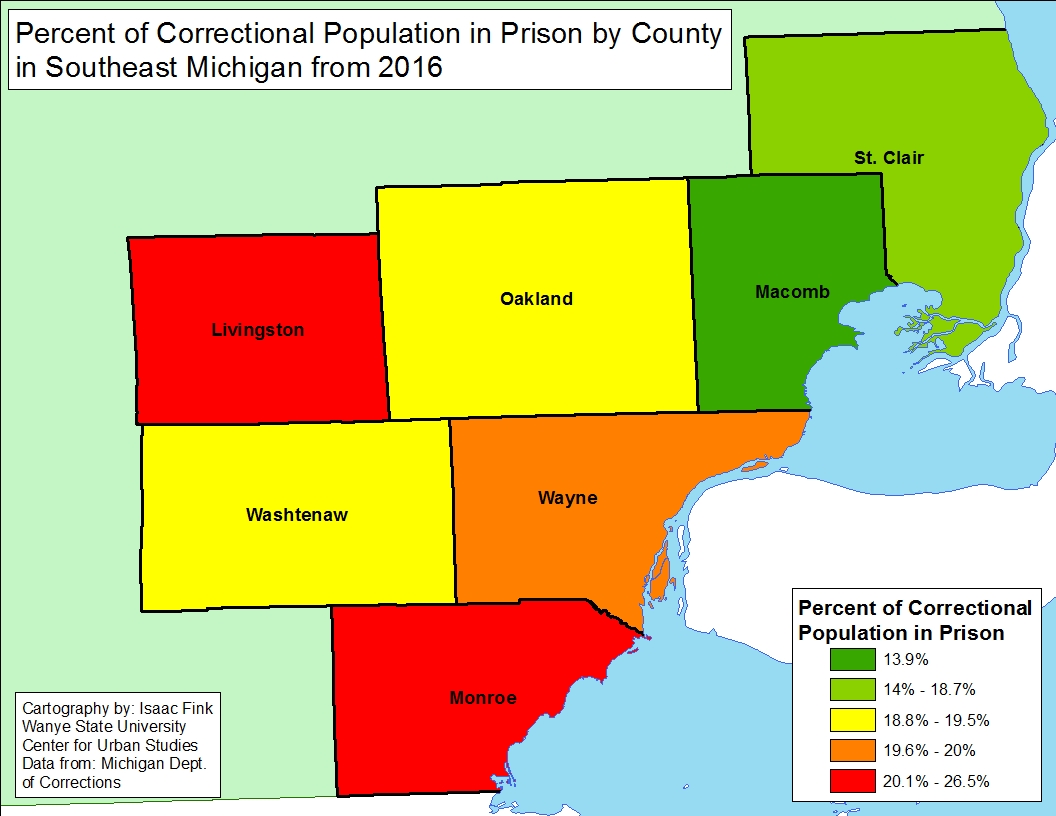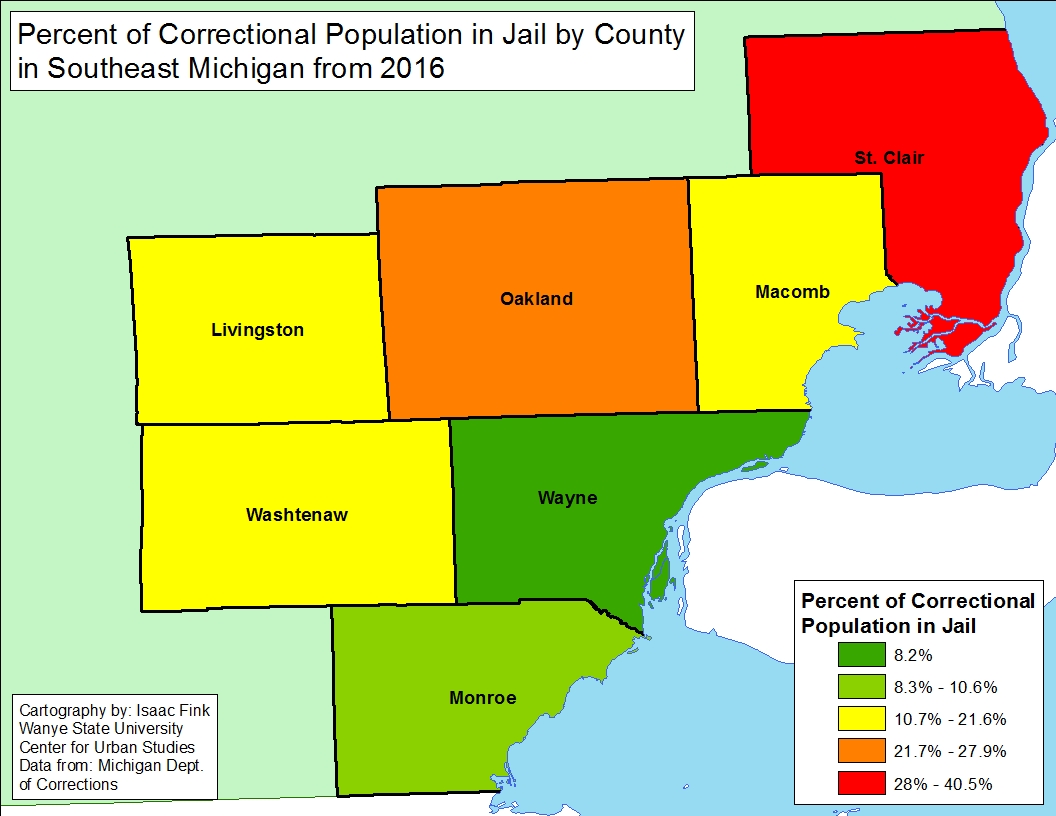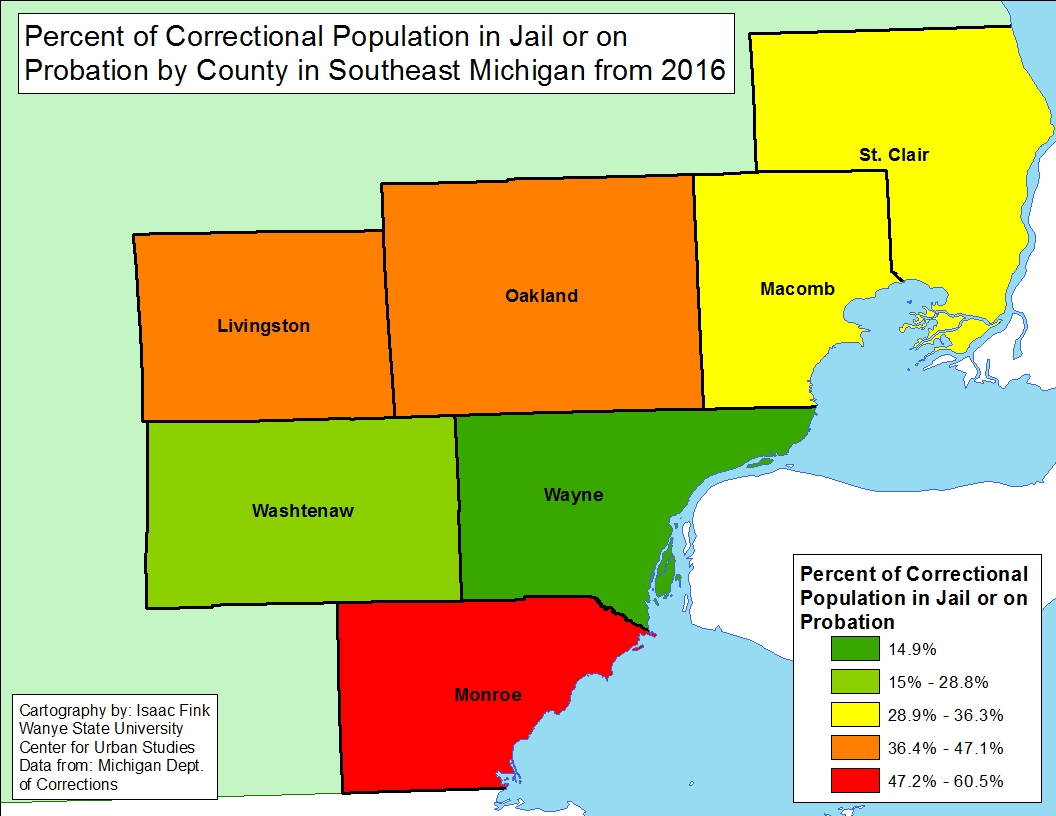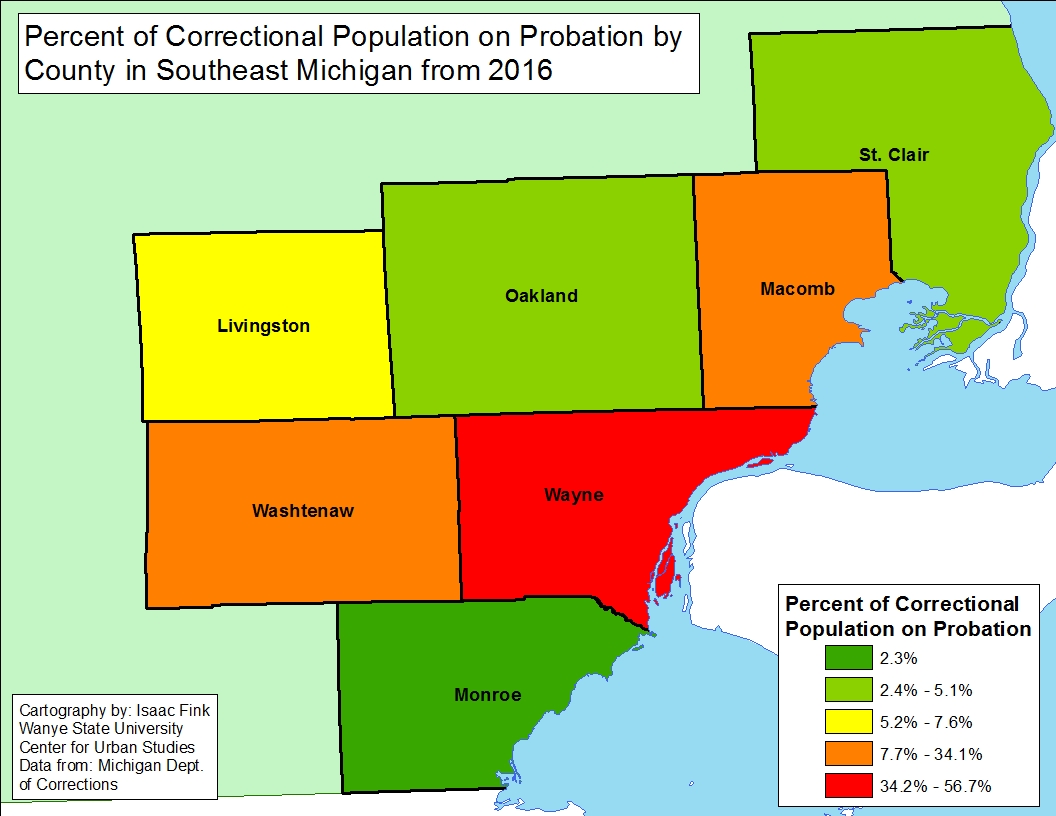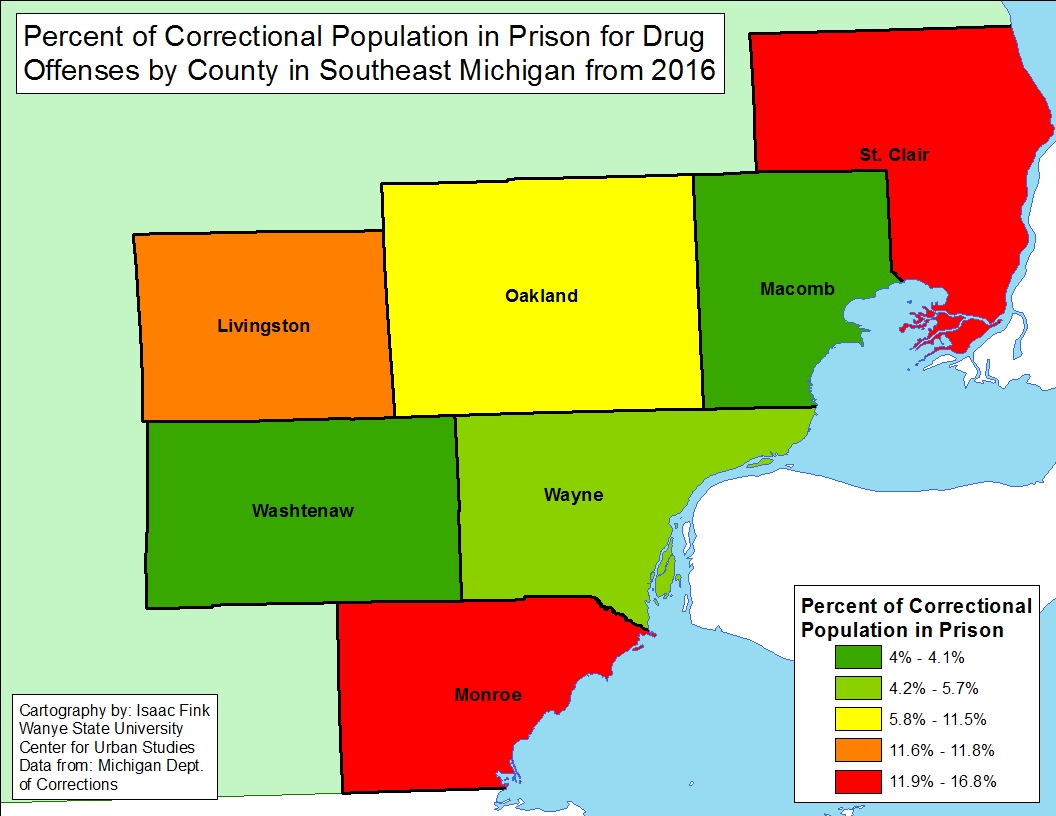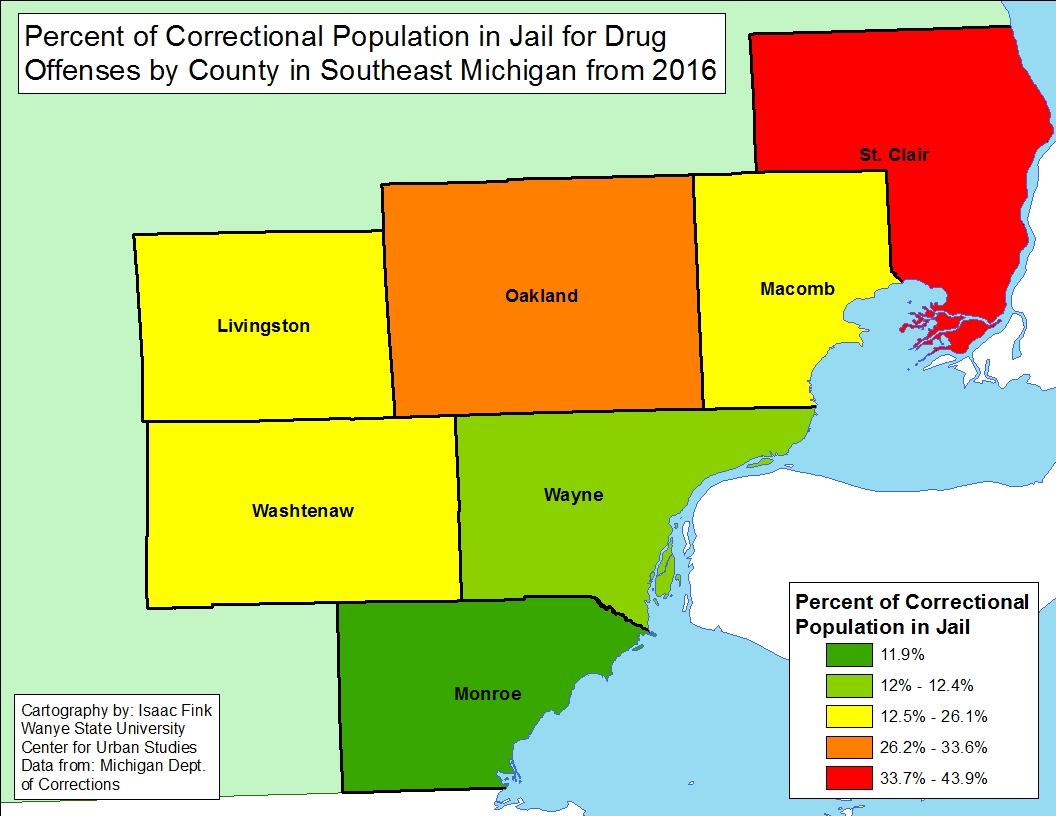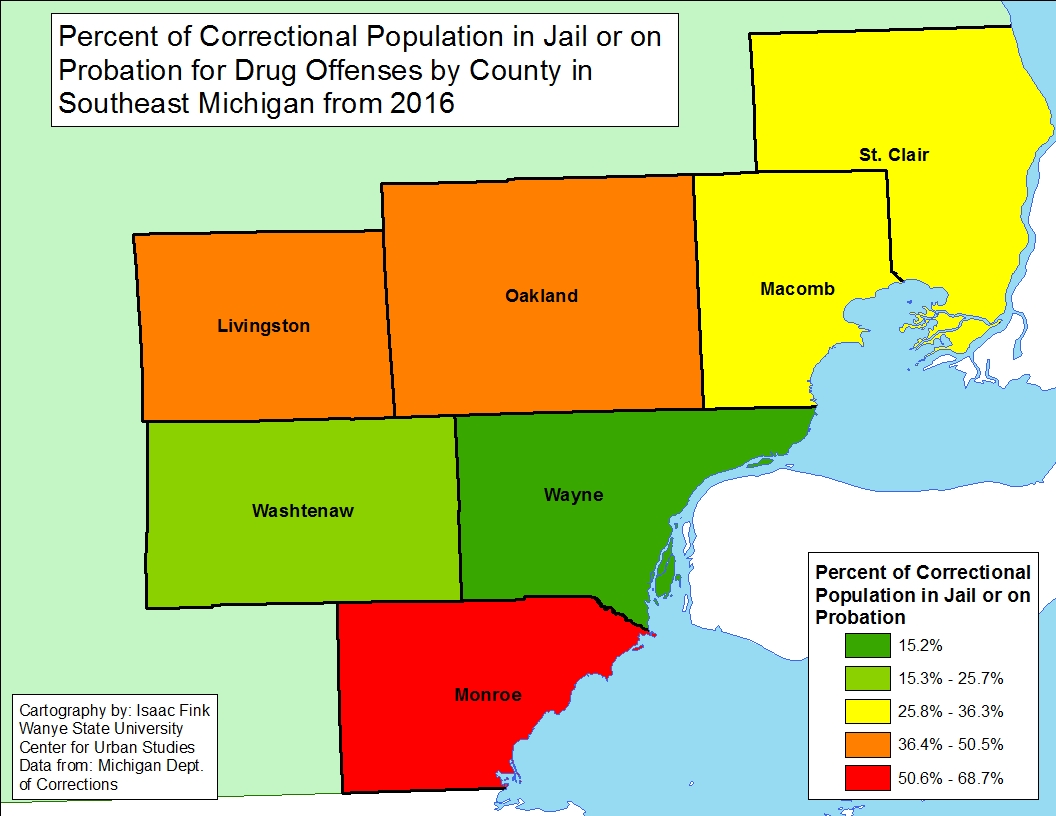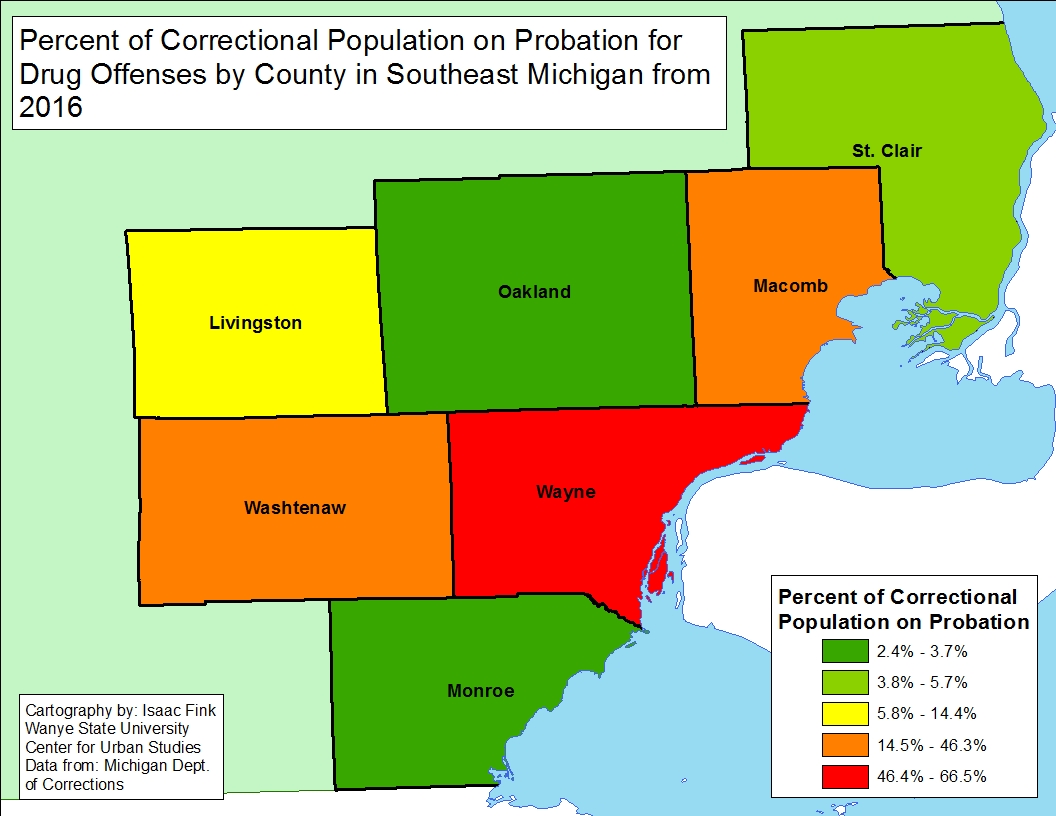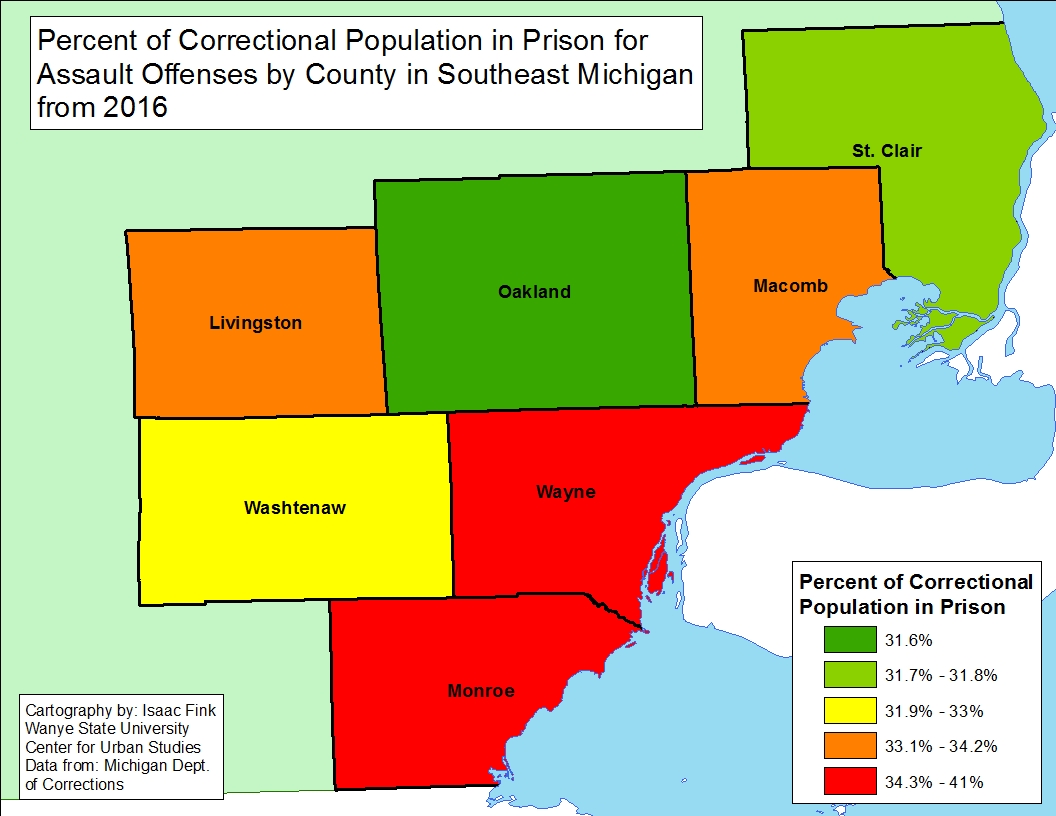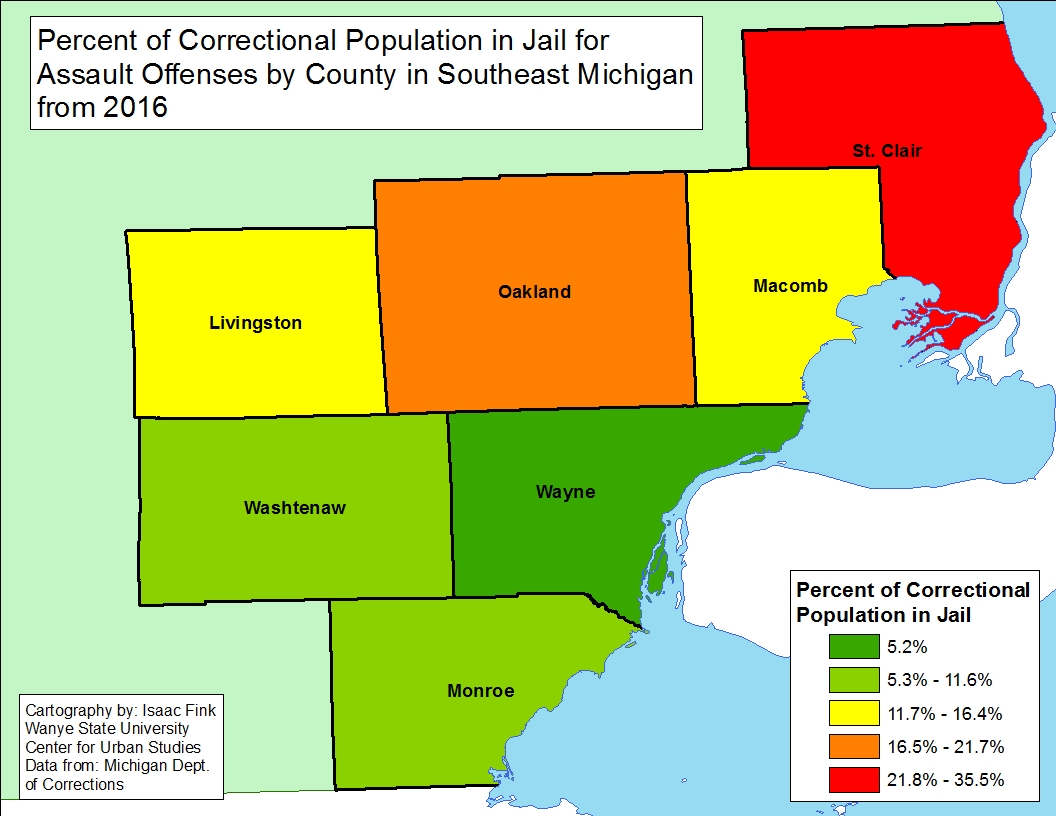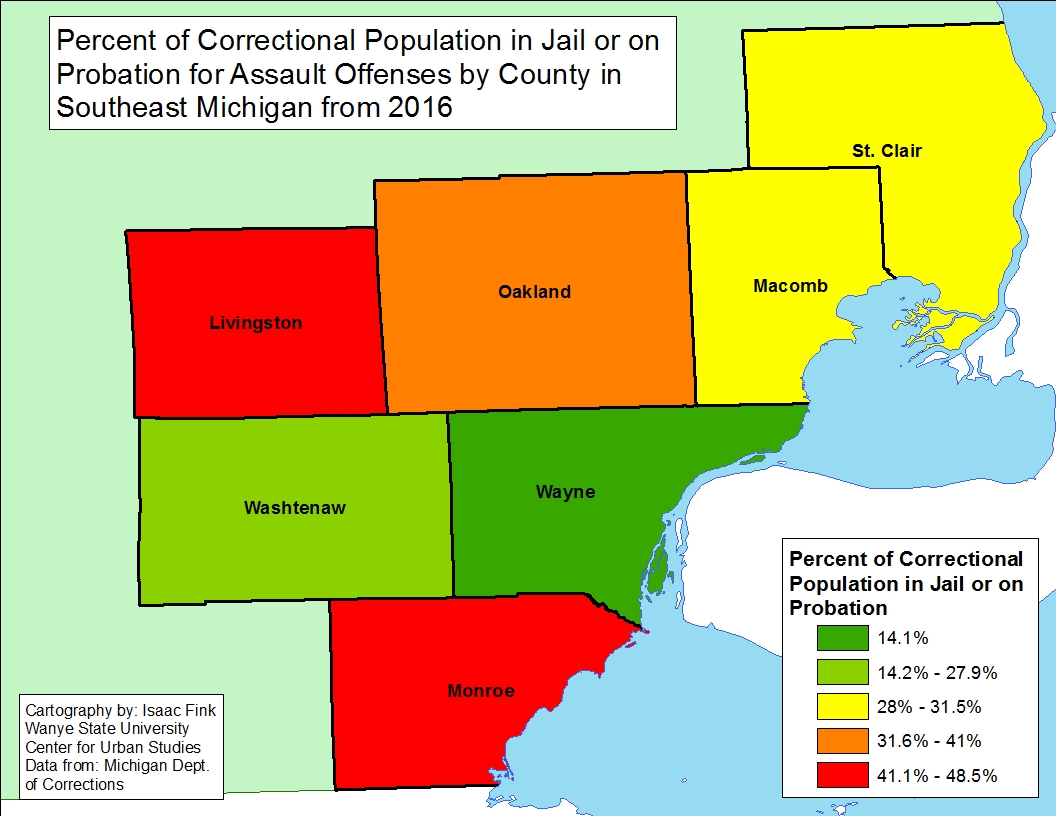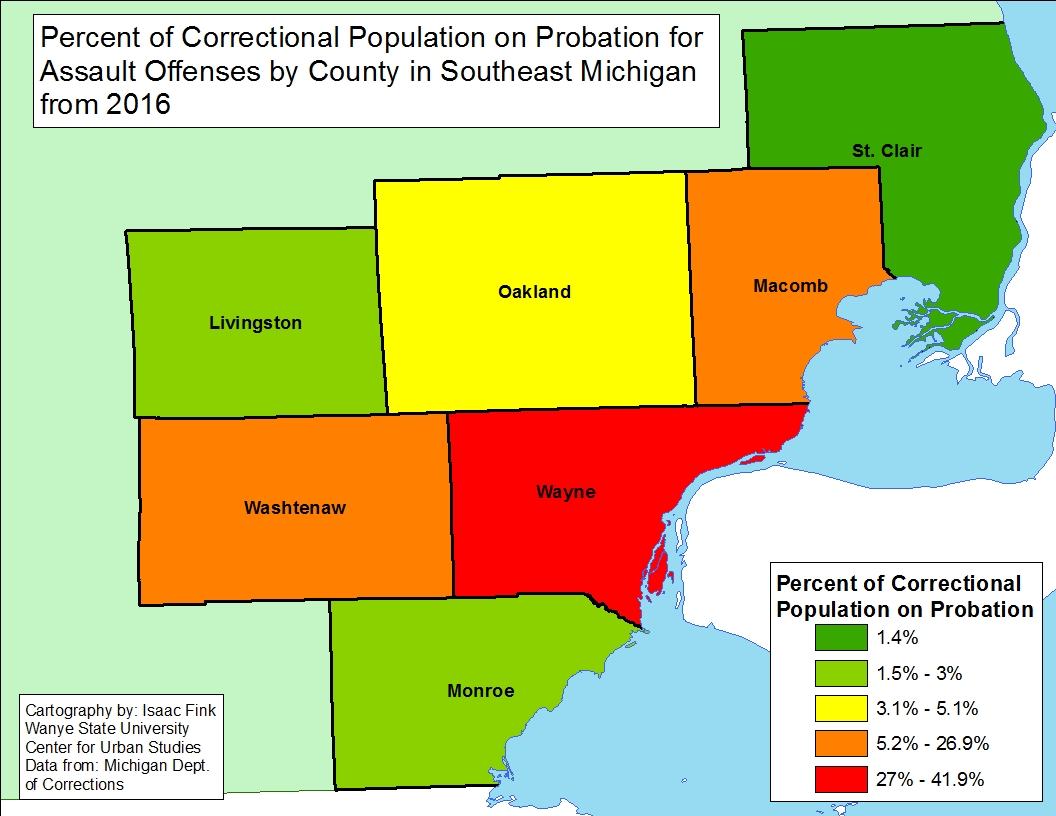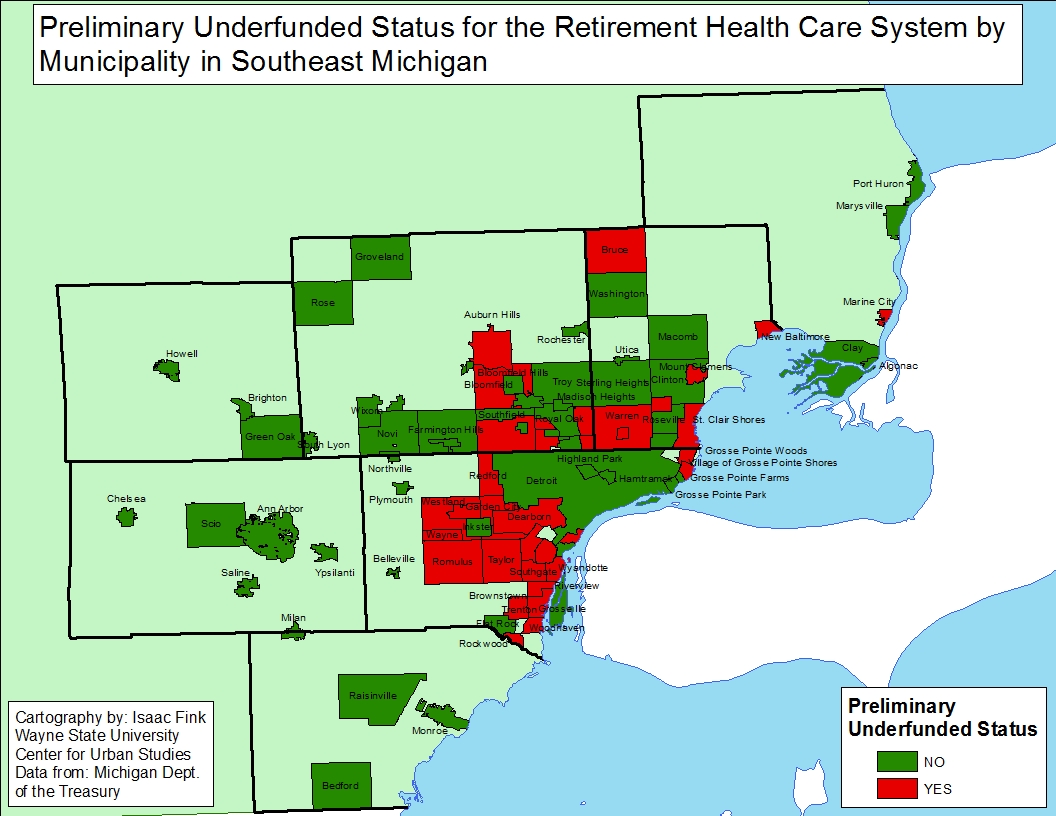Last week’s blog focused on what sentencing types felony offenders received in 2016 for the Southeastern Michigan region. That information is valuable in understanding if one sentencing type, such as prison, jail or probation, is more common than other regionally and from county-to-county. This, week the data digs further to see if there is any type of trend in sentencing types at the state level and at the county level in Southeastern Michigan. Additionally, the data in this post shows the sheer number of felony offenders who were sentenced in total and to prison or jail between 2012 and 2016. One important note is that those sentenced to prison are sentenced to spend more than a year in jail/prison.
In the first chart below, the data shows there has been a decrease in the number of people charged as felony offenders and sentenced to anything ranging from prison to jail to probation, or even community service. In 2012 there were 49,201 felony criminal offenders and by 2016 that number decreased to 47,347. This is a trend similar throughout Southeastern Michigan, with Wayne County having the highest number of felony criminal offenders and also the largest difference of those being sentenced between 2012 and 2016. In 2012 there were 10,103 felony criminal offenders in Wayne County and in 2016 that number decreased to 9,315. Of the seven counties in the region, Monroe County was the only one to experience an increase in the number of criminal felony offenders between 2012 and 2016. In 2012 there were 631 felony offenders sentenced and in 2016 that number increased to 744. Livingston County has had the lowest number of criminal felony offenders sentenced each year between 2012 and 2016 in the region.

Although there has been a gradual decrease in the number of felony criminal offenders sentenced to prison in Southeastern Michigan between 2012 and 2016 the percentage sentenced to prison has not followed that exact pattern. At the state level, there were 10,732 felony criminal offenders sentenced to prison in 2012, and by 2016 that number decreased to 9,648. On a percentage basis, 21.4 percent of the felony criminal offenders were sentenced to prison in 2012 and in 2016 that number was 20.4. Regionally, Livingston and Monroe counties had the highest percentage of felony criminal offenders sentenced to prison between 2012 and 2016, but by the numbers Wayne County had the highest number of offenders sentenced to prison (2,329 and 1,867, respectively). In 2012, 25.3 percent of felony criminal offenders were sentenced to prison in Livingston County and for Monroe County that number was 24.1 percent. Respectively, those numbers decreased to 24.5 percent for Livingston County and increased to 26.5 percent for Monroe County.
As noted above, Wayne County had highest percentage of felony criminal offenders sentenced to prison between 2012 and 2016, but in terms of the percentage sentenced to prison as opposed to other sentencing options, Wayne County has consistently remained in the middle of all seven counties in the region and has experienced an overall decrease in the percentage sentenced from 23.1 percent in 2012 to 20 percent in 2016. Overall, Macomb County has consistency had the lowest percentage of felony criminal offenders sentenced to prison, with the exception of 2015. Macomb County has also experienced a decrease in the percentage and number of felony criminal offenders sentenced to prison. In 2012, there were 710 felony criminal offenders sentenced to prison in Macomb County, which made up 16.5 percent of felony criminal offenders sentenced that year. In 2016 the number of felony criminal offenders sentenced to prison decreased to 572, and the percentage decreased to 13.9 percent.


The chart below shows the number of felony criminal offenders sentenced to jail throughout Southeastern Michigan. In 2012 Oakland County there were 1,059 felony criminal offenders sentenced to jail, and in 2016 there were 1,367 felony criminal offenders sentenced to jail. For Wayne County, there were 887 felony criminal offenders sentenced to jail in 2012 ,and in 2016 there were 767 sentenced.
These numbers for Wayne County reflect where the county lies amongst the other counties in the region in terms of the percentage of felony criminal offenders sentenced to jail between 2012 and 2016. As the second chart below shows, with the exception of 2014, Wayne County has the had the lowest percentage of felony criminal offenders sentenced to jail regionally between 2012 and 2016. In 2012 11.4 percent of criminal offenders were sentenced to jail in Wayne County in 2016 that number was 8.2 percent. On the opposite side of the spectrum, St. Clair County has consistently had the highest percentage of felony criminal offenders sentenced to jail out of all seven counties in the region; its number have also been above the state’s number as well. In 2012, 36 percent of felony criminal offenders in St. Clair County were sentenced to jail and in 2016 that number increased to 40.5 percent. Even though the percentage of felony criminal offenders sentenced to jail in St. Clair County is increasing, the total number of offenders sentenced to jail decreased from 908 in 2012 to 840 in 2016.


The above charts focus on the number and percentage of individuals sentenced to prison and jail in Southeastern Michigan, showing that, in general, there has been a decrease in those two sentencing options
Below, the chart shows the percentage of felony criminal offenders sentenced to probation. Oakland and St. Clair counties experienced the largest decrease in the percentage of felony criminal offenders sentenced to probation. In 2012, 7.6 percent of felony criminal offenders were sentenced to probation in St. Clair County and 6 percent of the offenders in Oakland County were sentenced to probation that same year. In 2016 that number decreased to 4.2 percent for St. Clair County and 5.1 percent for Oakland County. Oakland County has experienced an increase in the percentage of felony criminal offenders sentenced to jail between 2012 and 2016 and St. Clair County has experienced an increase in the percentage of felony criminal offenders sentenced to jail and prison in between 2012 and 2016.
Washtenaw and Wayne counties have experienced the largest increase in the percentage of felony criminal offenders sentenced to probation between 2012 and 2016. In 2012, 29.3 percent of felony criminal offenders were sentenced to probation in Washtenaw County and 52.1 percent were sentenced to probation in Wayne County. By 2016 that number increased to 34.1 percent for Washtenaw County and 56.7 percent for Wayne County. The percentage of individuals sentenced to probation for Wayne County has consistently been the highest in the region.


Overall, this post shows that there has been an overall decrease in the number of felony criminal offenders between 2012 and 2016, and with that a decrease in the number of such offenders sentenced to prison. The percentage of individuals sentenced to prison in Southeastern Michigan has generally decreased as well, with the exception of counties such as St. Clair and Monroe.
Oakland County experienced one of the highest percentage increases in the number of felony offenders sentenced to jail; the number increased too. As these numbers and percentages sentenced to prison increase, they decrease for the number of felony criminal offenders sentenced to probation.
Counties such as Wayne, Washtenaw, and even Macomb, have been using probation more as a sentencing option since 2012 (Wayne is in the upper 50%). By contrast, Monroe and St. Clair use probation for small proportions of offenders–less than 10 percent. Clearly, the type of sentencing a felony criminal offender receives varies substantially across counties. There could be many reasons for this. It is possible decisions might be related to cost of sentencing an individual to jail or prison and the number of offenders already being housed in a jail or prison. For example, Macomb and Wayne counties have well publicized overcrowding issues at their jails, and Wayne County also has budget issues. This could help explain the trend toward increased probation and decreased jail.
